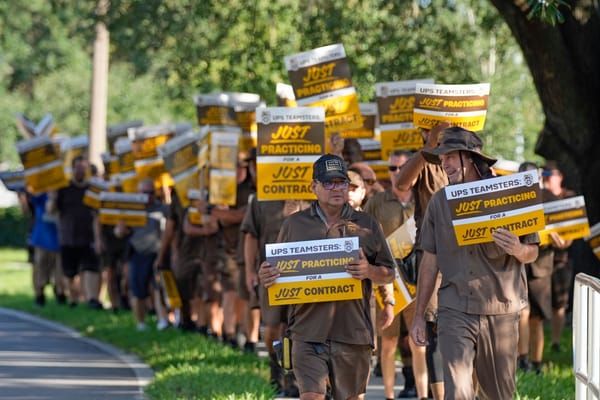Even though American law and politics remain rigged to discourage organized labor, militancy among workers is more intense than it has been in decades. One factor may be the tight labor markets created by the unexpectedly rapid reopening of the economy. Another may be the effect of bipartisan praise during the lockdowns of “essential workers” who had previously been absent from public discourse. While manufacturing can be offshored by firms seeking to evade unionization, infrastructure can’t be moved—a fact that explains the recent willingness of the railroads and UPS to avert strikes by negotiations.
Labor militancy is a useful reminder of the importance of direct, extra-political action by ordinary people whom the political system usually ignores. The three forms of direct action are the strike by workers, the boycott by consumers, and civil disobedience by citizens. These are the weapons of the weak. All should be used only in emergencies, when the redress of grievances through electoral politics or other means has failed. Unfortunately, in the nature of things, such redress is bound to fail frequently.
In the theory of democracy taught to American schoolchildren in civics classes, a popular majority instructs politicians what policies to carry out through the mechanism of free and fair elections. In reality, all societies are oligarchies, governed by an elite that is a numerical minority of the population; one-man rule is as much a myth as rule of the many.
Liberal democracy in the real world is a system of competition among oligarchic factions organized as formal party coalitions, unlike the informal elite factions that compete in nondemocratic one-party regimes or military or clerical dictatorships or royal autocracies. The policy platforms in multiparty oligarchies are typically determined by the donors and interest-group allies of politicians, and may not reflect the actual policy preferences of most citizens as reflected in polls. Having been adopted in advance of elections, policy platforms serving elite coalitions are then sold to the voters—if, that is, the politicians choose to campaign on the basis of policy programs. Increasingly in the United States, the parties appeal to voters mostly on the basis of symbolic appeals to identity and values. But once in power, they enact the policies that their donors and elite constituents want—policies most of their voters may neither be aware of nor approve.
